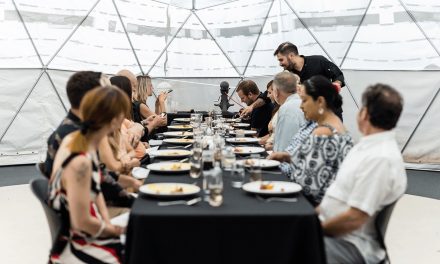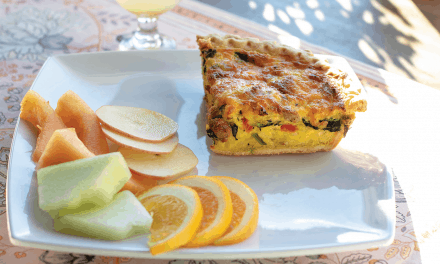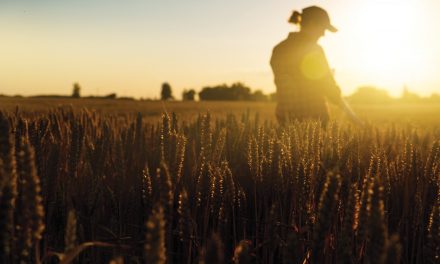By Ellen Zachos

Ellen Zachos in the field. Photo by Mark Hardy.
How much do I want those locust flowers? How delicious is that cattail pollen? Will that branch hold my weight while I reach for those oyster mushrooms? Am I going to run into a mama bear and her cubs in the berry patch? Do I really need those buffalo berries?
Maybe you don’t ask yourself these questions on a regular basis, but I do. And the answers are almost always: a lot, very, I don’t know but I’m going to try it anyway, I hope not, and yes.
By nature, I am not a daring person. I run away from bees (I tell people I’m allergic, but I’m really just afraid), I cringe every time I pull a tick off me (I get a lot of ticks), and I fear the blisters of poison ivy as much as the next person does. But certain things are worth the risk.
Foraging has made me bolder, and I can taste that boldness in every bite of my harvest. Wild foods are rare, ephemeral, and made more precious by the commitment that brought them to the table. It’s impossible to separate the experience of gathering from the wild flavors themselves. I can’t taste wild grape sorbet without remembering the park ranger who argued that I couldn’t pick them in the National Forest. (You can; he didn’t know the rules.) What could make a food more precious, more delicious, than risking something, be it a bee sting or your dignity, to claim it?
Desire is an excellent motivator. When presented with the choice between venturing into the woods alone (because I know the porcini are popping) and possibly running into a hungry bear, or waiting until another wild foods forager can join me, the path is clear. The fleeting nature of wild edibles means that foragers can’t postpone the harvest. We get out there and gather when the gathering is good, which means we often forage alone.
There’s more than one downside to being alone in the woods. Twist an ankle or fall out of a tree, and with no one to help, an inconvenience can become a threat. Run into an aggressive mammal on the trail and I’d be happy to have the protection of a larger gathering party. As a forager, I decide every day if the reward is worth the risk. I ask myself, “How much do I want it?” It’s an individual decision, and becomes part of my individual relationship to my food.
When I see heavy, perfect clusters of chokecherries, then notice they’re surrounded by poison ivy, I step in carefully, and wash my pants of the poison ivy as soon as I get home. When the cattails with the best pollen are in the middle of a pond that’s deeper than my boots, I shrug and wade in anyway. And when the linden flowers I plan to macerate in vodka are being probed by more species of bee than I knew existed, I gently reach in among the insects to collect what I need. These are choices I can only make for myself. I won’t urge you to hop a fence, ford a stream, or risk a rash. Those decisions are up to you. Alone.
In some cultures, foraging is normal. And in those cultures, people often forage together. No one thinks it’s crazy to say, “Hey, Michael, the elderflowers are perfect and it’s going to rain tomorrow so we should get them now!” But here, foraging is out of the ordinary. Here, most people respond to, “I’m a forager,” with blank stares, or questions about dumpster diving.
Here, foraging is usually a solitary occupation. Maybe because there aren’t a lot of us, or because we don’t want to share our special places, or because we want to fly under the radar. Personally, I prefer foraging with friends. I love the camaraderie of walking through the forest with a like-minded gatherer, eyes to the ground, talking about what we’re seeing and what we hope to find. We teach each other as we walk, and the excitement of discovery increases exponentially when there’s someone to share it with.
We humans are social animals. It’s natural to feel uncomfortable being alone in the wild, just as it’s natural to want to avoid the itch of poison ivy and the sting of a bee. I feel small and vulnerable, surrounded by a natural world that is so much more powerful than I am, but I also feel exhilarated. The lure of wild foods is too strong to resist. They call to me and I must go. I set aside my trepidation and venture out to gather what very few can gather. That’s what foragers do.

Edible celebrates New Mexico's food culture, season by season. We believe that knowing where our food comes from is a powerful thing. With our high-quality, aesthetically pleasing and informative publication, we inspire readers to support and celebrate the growers, producers, chefs, beverage and food artisans, and other food professionals in our community.












